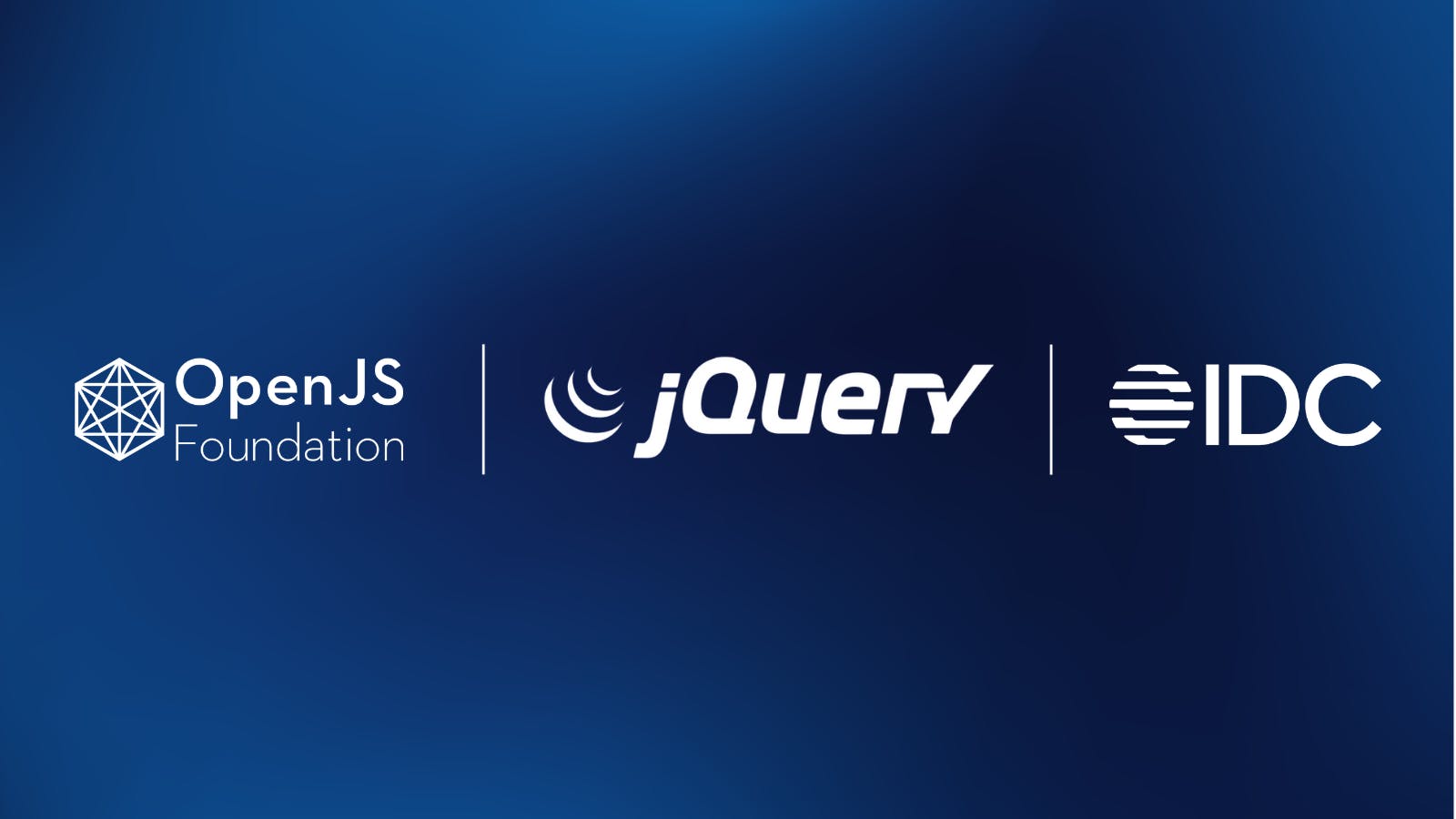Better Features and Operational Benefits Come with Current jQuery Use
The OpenJS Foundation, working with its community, continues to deliver regular updates to the widely-used jQuery solution. IDC conducted research on the use of jQuery in the U.S., Germany and the U.K., with a total of 509 survey respondents in those three countries representing small, medium and large businesses across 23 distinct industries.

Sponsored guest post by Al Gillen, International Data Corporation (IDC)
After decades of being sequestered in a back room and treated as a service department for other parts of the business, information technology (IT) professionals now enable modern, critical business operations. In many organizations today, IT is becoming integral to and inextricably intertwined with the business. Accompanying this newfound attention comes increased expectations and increased responsibility to ensure that applications, application services, and data services are robust, feature-rich and secure.
As a result, the pressure on IT departments to perform well and deliver quickly is increasing, thanks to greater corporate reliance upon the applications, websites, and cloud services used to operate and promote the business. In many cases, the software directly powering today’s external-facing solutions is open source, and in the majority of scenarios, there is reliance, at least in part, upon open source software (OSS) technologies in the underlying software stack.
OSS is available in a multitude of formats and support models. For many critical enterprise deployment scenarios, OSS technologies must have a reliable governance model and a large and healthy community surrounding the technology. In some cases, there is also a commercial support option. Of course, if the technology is available with ongoing maintenance and upgrades at no subscription cost for accessing that ecosystem, that is a real bonus.
Such is the case for jQuery, which continues to evolve with new features and stronger security thanks to an engaged and attentive community organized by and supported by the OpenJS Foundation, a Linux Foundation organization. The OpenJS Foundation, working with its community, continues to deliver regular updates to the widely-used jQuery solution.
IDC conducted research on the use of jQuery in the U.S., Germany and the U.K., with a total of 509 survey respondents in those three countries representing small, medium and large businesses across 23 distinct industries. The survey participants were selected based on knowing their company’s use of internet-facing websites, but were not qualified based on knowledge of or confirmed use of jQuery. After that qualification, the study found that 89% of the respondents confirmed knowledge of the use of jQuery on their internet-facing websites. This data indicates that jQuery is heavily deployed throughout Internet-facing websites today.
This IDC study focused on gauging how current the customer base is, in terms of the versions of jQuery deployed to support internet-facing websites. The good news is that 44% of organizations that IDC contacted are using current versions of jQuery on at least some of their Internet-facing websites. But the less good news is that over half of the respondents are either slightly behind or significantly behind on the versions of jQuery in use on their websites, with those respondents citing the use of a version of jQuery that is no longer under maintenance by the OpenJS Foundation and its community. Unfortunately, many users are unaware of what versions of jQuery are under active support today.
There are, of course, risks associated with using any software that may no longer be under current maintenance, and this concern is not limited to open source software; the same would be true of using proprietary software that is no longer supported, patched, and updated.
But equally important is that some of the best features that a given technology offers are typically found in the most modern versions. These cutting-edge features often are used by digital innovators to create differentiation for their customer experience or the user experience associated with the products and services they deliver.
Further compounding the risks associated with using out-of-support versions of jQuery is that most organizations that completed this survey indicated that they are using jQuery for capturing and processing personally identifiable information (PII). Across the survey sample, including respondents using in-support and out-of-support versions of jQuery, 80% of the respondents are capturing one or more types of PII. For organizations using versions of jQuery that pre-date version v3.6.0, this data capture can represent a potential risk, as any mishandling of PII could potentially lead to regulatory compliance issues for the business.
The good news is that most organizations say they are either up to date or have the ability to get there. In fact, 3 out of 4 respondents fall into this camp. The other quarter of the respondents to this survey say they will need help or cannot update their jQuery instances. Even in the case of the 36% who say they can get current (roughly half of the 75% that say they are current or can get current), the urgency to make that upgrade – even with the capture of PII and the lack of ongoing support from the jQuery community – is not enough motivation to make such an upgrade a high priority.
The take-away from this study is simple: jQuery users have access to a robust, community-supported technology that is free from subscription costs for them to acquire or use, and this project is seeing continual investment and enhancement. Users are already enjoying considerable benefits from the technology, but if you are not using current versions, you owe it to your business to move forward to a supported version to maximize the benefit and minimize any potential risks.